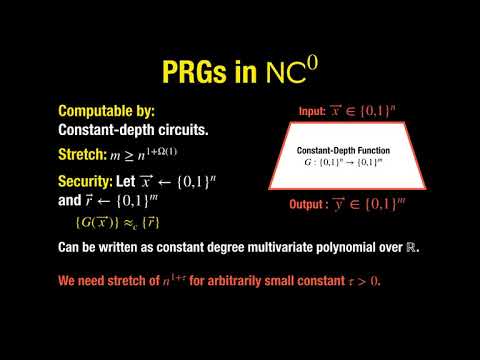Description:
Explore the third part of a comprehensive lecture on indistinguishability obfuscation from well-founded assumptions. Delve into advanced cryptographic concepts, including Learning Parity with Noise, PRGs in NC, and the implausibility of degree-2 PRGs. Examine the turning point of "Degree-2.5" Integer PRGs and discover the new Simple PRG (SPRG) overview. Gain insights into SPRG construction, key intuitions about sparsity, and error correction techniques. Analyze security considerations and challenges in revealing information about errors.

Indistinguishability Obfuscation from Well Founded Assumptions - Part 3
Add to list
#Conference Talks
#IEEE FOCS: Foundations of Computer Science
#Computer Science
#Cryptography
#Mathematics
#Theoretical Mathematics
#Indistinguishability Obfuscation